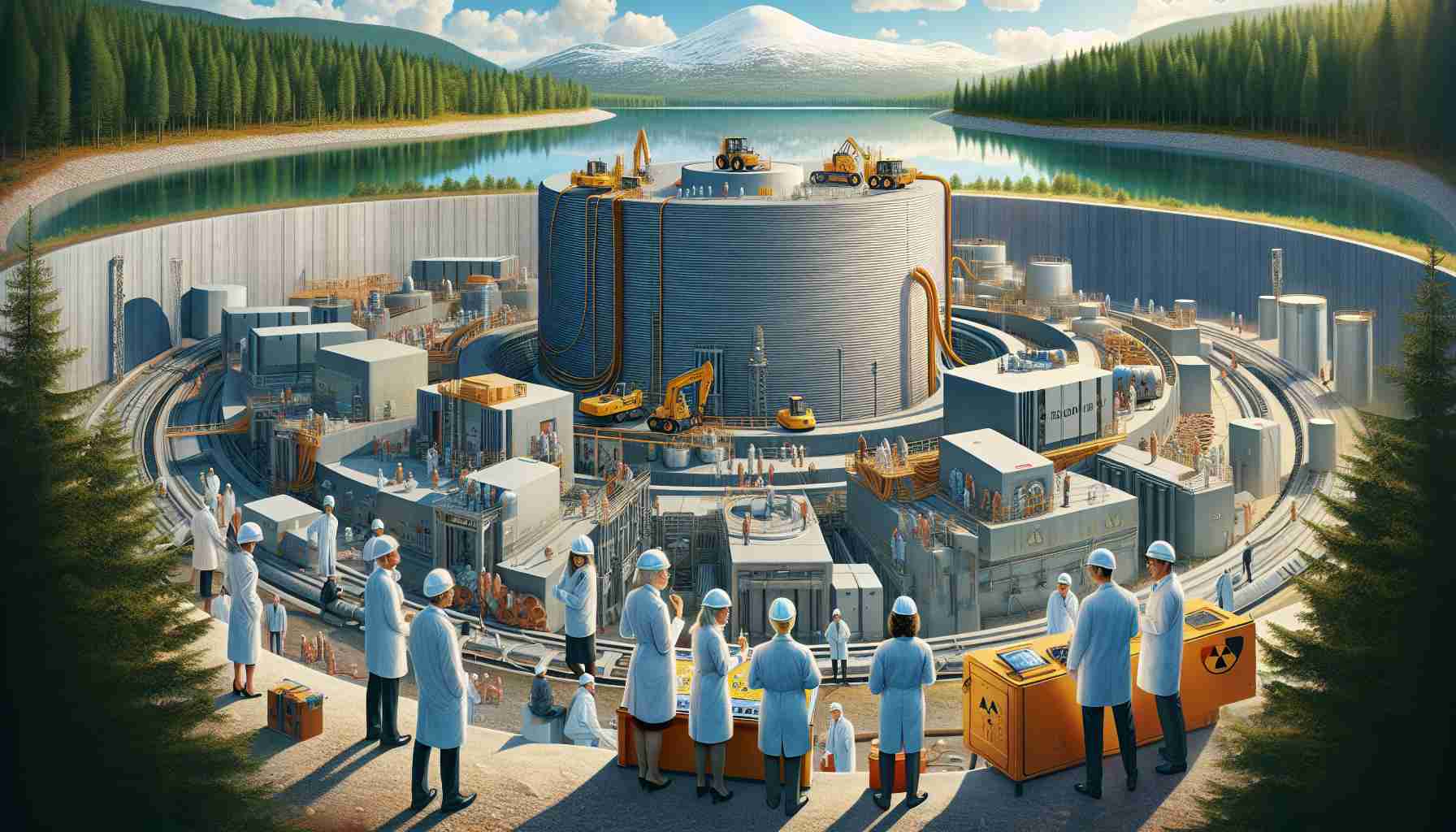- The Forschungszentrum Jülich houses the D-Wave Advantage™ quantum annealing system, marking a significant leap in high-performance computing.
- Featuring 5,000 qubits with 15-way connectivity, the system integrates with the Jülich UNified Infrastructure for Quantum computing (JUNIQ).
- Collaboration with JUPITER, Europe’s leading exascale supercomputer, aims to solve complex artificial intelligence and quantum optimisation challenges.
- An upgrade to the Advantage2™ quantum processor is anticipated, promising improved coherence, connectivity, and energy scale enhancements by 40%.
- Previous breakthroughs influence diverse fields such as protein folding and quantum cosmology, featured in top journals like Nature Communications.
- Led by Prof. Thomas Lippert and Dr. Alan Baratz, the initiative symbolizes a fusion of high-performance computing and quantum technology.
- The project signals the expansion of computational limits, offering potential solutions to complex global challenges.
Amid the serene landscape of Forschungszentrum Jülich, a transformative force silently hums: the newly acquired D-Wave Advantage™ quantum annealing system. As the first high-performance computing centre worldwide to house this marvel, the institute positions itself at the frontier of a computational revolution.
A staggering 5,000 qubits beat at the heart of this machine, intertwined with a sophisticated 15-way connectivity that melds seamlessly into the Jülich UNified Infrastructure for Quantum computing (JUNIQ). A rendezvous is set with JUPITER, Europe’s pioneering exascale supercomputer, as this alliance embarks on an epic quest to unravel the intricacies of artificial intelligence and quantum optimisation. Researchers foresee a future where problems once deemed unsolvable succumb to this extraordinary power.
The D-Wave system is destined for an upgrade, evolving into the next-generation Advantage2™ quantum processor. This iteration promises to double coherence, enrich connectivity, and boost the energy scale by 40%, offering researchers an even greater arsenal for discovery. Past achievements have already reshaped understanding in fields from protein folding to quantum cosmology, their reverberations echoing through prestigious journals like Nature Communications and Nature Physics.
An air of anticipation envelops the Jülich Supercomputing Centre as Prof. Thomas Lippert and Dr. Alan Baratz champion the potential of this collaboration. Together, they unlock the doors to innovation, marrying high-performance computing with quantum prowess.
In this new age of quantum mechanics, the takeaway is clear: the limits of computation are set to expand beyond imagination, ushering in solutions to some of humanity’s most intricate challenges. Across the globe, scientists and technologists keenly watch, as Jülich blazes a trail into the future.
Unleashing Quantum Potential: What the D-Wave Advantage™ Means for the Future of Computing
How-To Steps & Life Hacks
How to Utilise Quantum Annealing for Optimisation Problems:
1. Understand your Problem Space: Identify whether your optimisation problem can benefit from quantum annealing—typically those involving a large search space with a rugged landscape, like finding the minimum energy state in a spin glass.
2. Translate Problem to QUBO Form: Convert your problem into a Quadratic Unconstrained Binary Optimisation (QUBO) problem, which is a format the D-Wave system can process.
3. Tune Parameters: Use the system’s interface to tweak annealing parameters such as the anneal time and schedule to improve solution robustness.
4. Run Multiple Iterations: Solutions can vary due to the probabilistic nature of quantum computing; run your problem multiple times to ensure consistency.
5. Post-Process Solutions: Use classical algorithms to finalise and validate solutions obtained from the quantum processor.
Real-World Use Cases
– Supply Chain Optimisation: Companies can use the D-Wave system to optimise logistics, reduce costs, and improve efficiency across global supply chains.
– Drug Discovery: It aids in simulating molecular structures for faster identification of potential drug candidates.
– Financial Modelling: Uses include portfolio optimisation and risk analysis with the ability to quickly process complex financial models.
Market Forecasts & Industry Trends
The quantum computing market is expected to grow significantly, with predictions suggesting it could reach over $64 billion by 2030. Advancements like the D-Wave Advantage™ system push this growth by making quantum computing more accessible and practical for business applications. Market Research Future
Reviews & Comparisons
D-Wave Advantage™ vs. Competitors:
– IBM Quantum: While IBM focuses on gate-based quantum computing ideal for error correction, D-Wave’s quantum annealing excels in solving combinatorial optimisation problems.
– Rigetti Computing: Another competitor that offers gate-model quantum computing which is still ahead in universal computations compared to the specialised use cases of D-Wave.
Controversies & Limitations
One limitation of D-Wave’s quantum annealers is that they do not perform universal quantum computations—that is, they cannot solve all types of quantum problems. Additionally, solutions can be prone to noise and decoherence, influencing accuracy. Critics argue that the practical advantages over classical computers are not yet substantial for many real-world problems.
Features, Specs & Pricing
– Qubits: 5,000 with an upcoming increase in the next-gen Advantage2™ processor.
– Connectivity: 15-way, improving to enhance scalability and robustness of solutions.
– Cost: While specific pricing can vary, quantum computation resources are generally leased on a per-use basis or through cloud subscriptions.
Security & Sustainability
Quantum computers like the D-Wave Advantage™ are touted for their potential to break current cryptographic methods; however, cryptographic algorithms will need to evolve alongside quantum advancements. Sustainability is a concern as these systems typically require low temperatures maintained by high energy use.
Insights & Predictions
The synergy between quantum and high-performance computing is expected to grow, with more industries adopting these technologies for solving complex problems in record time. The next decade may see quantum processors integrated into mainstream systems, bringing more comprehensive solutions across various domains.
Tutorials & Compatibility
The D-Wave system is compatible with common programming languages such as Python, using libraries such as Ocean SDK to facilitate interaction. Developers interested in leveraging quantum annealing can access tutorials on D-Wave’s website to create their quantum applications.
Pros & Cons Overview
Pros:
– Ideal for specific combinatorial problems.
– Fast computation capabilities.
– Industry-leading qubit and connectivity configurations.
Cons:
– Limited to specialised problem types.
– Environmental and operational costs can be high.
– Noise and potential error rates require additional error-checking mechanisms.
Actionable Recommendations
– Practical Assessment: Analyse whether quantum annealing can feasibly address your specific computational needs before investment.
– Stay Updated on Hardware Developments: Given the rapid advancements in quantum computing technology, keeping abreast of updates will help in making informed decisions on deployment.
– Engage with Quantum Ecosystems: Use tools like the Ocean SDK to experiment with small-scale problems and build a foundation for quantum-ready applications.
For further information on advancements in quantum computing, visit D-Wave Systems.
The source of the article is from the blog combopop.com.br


















